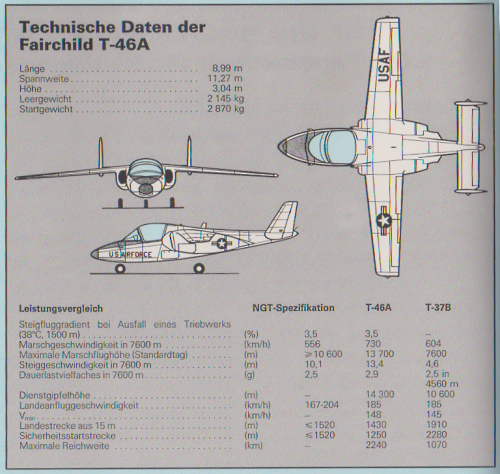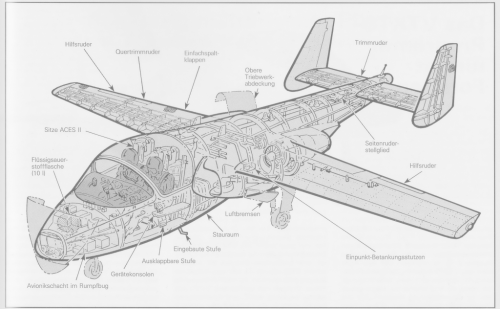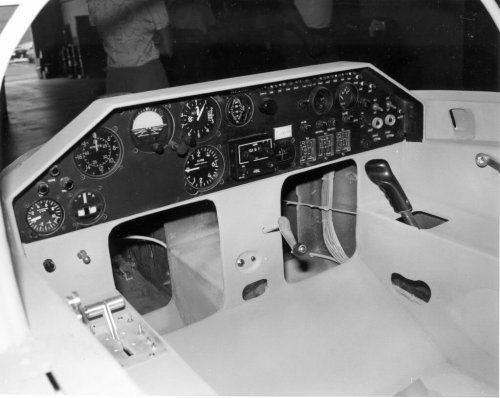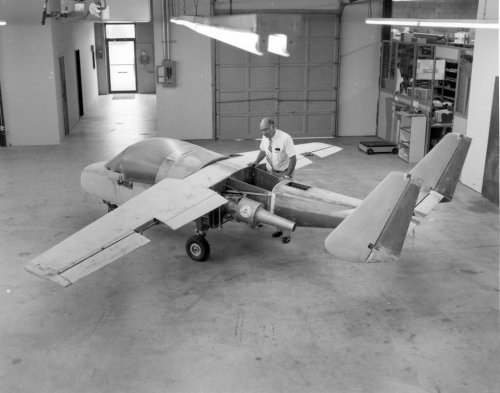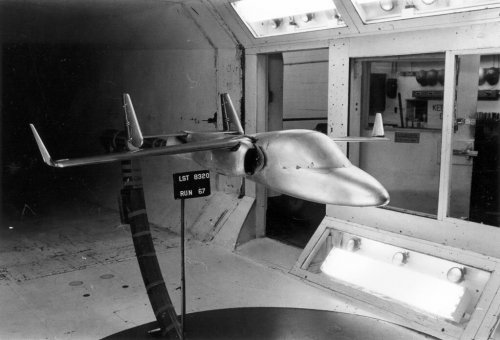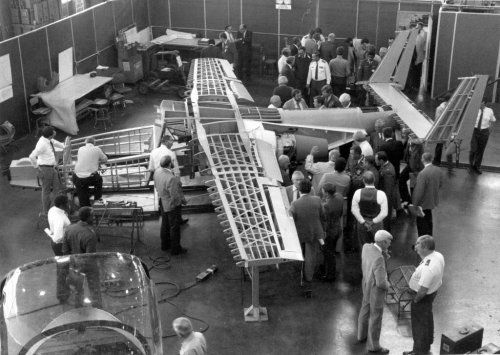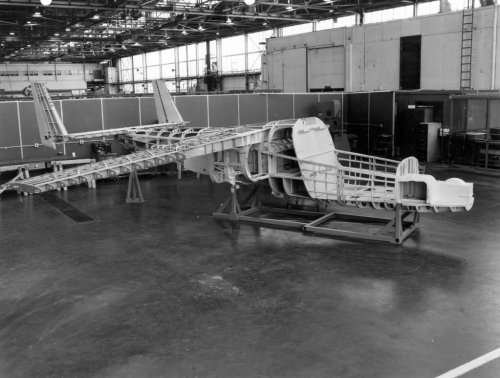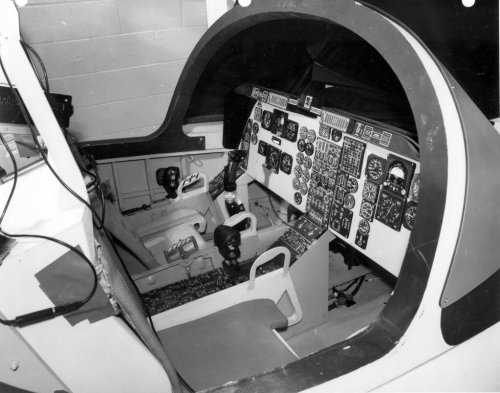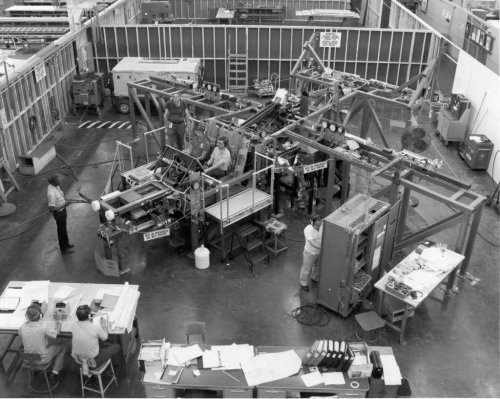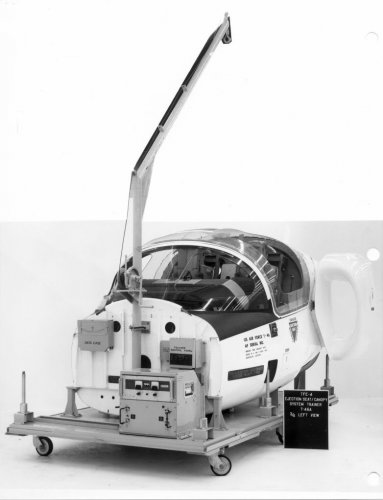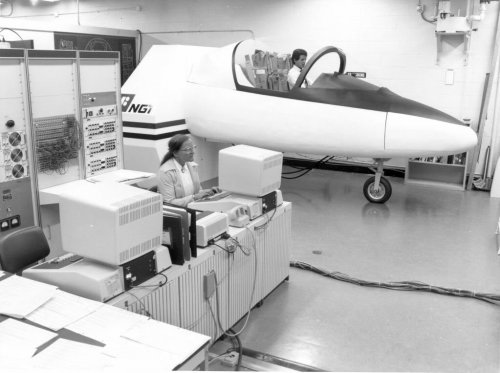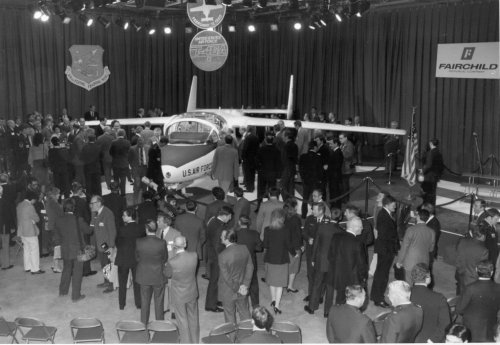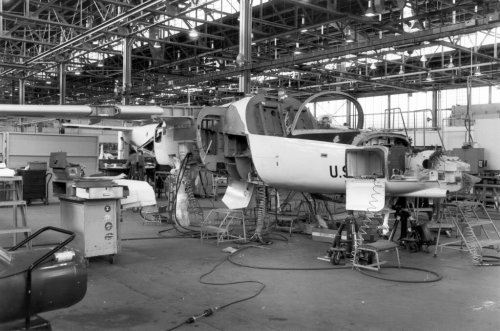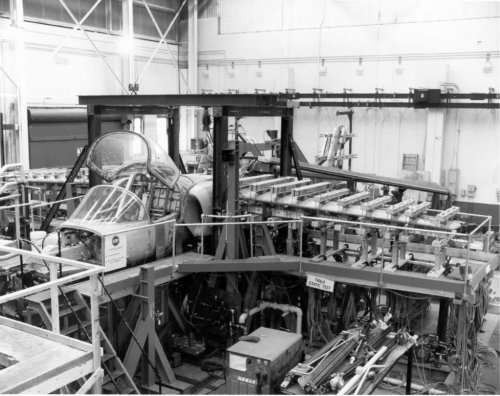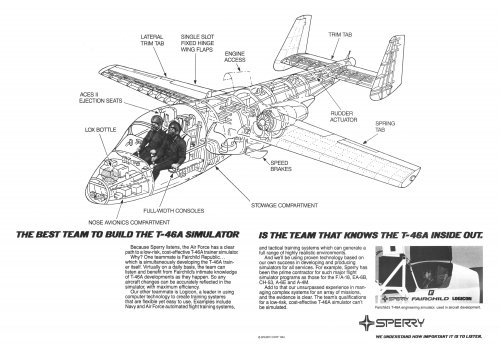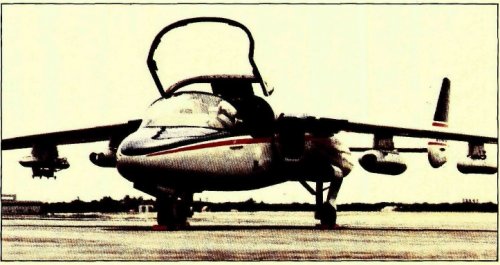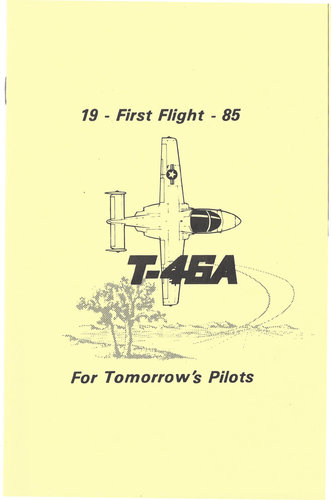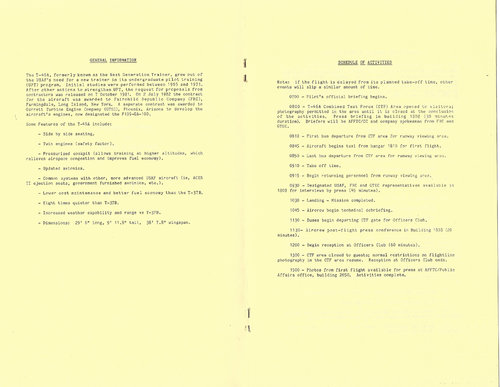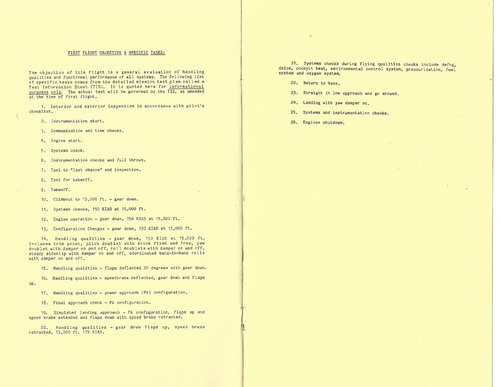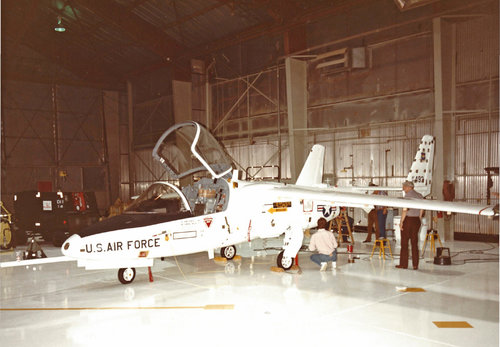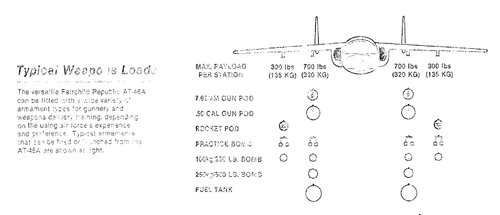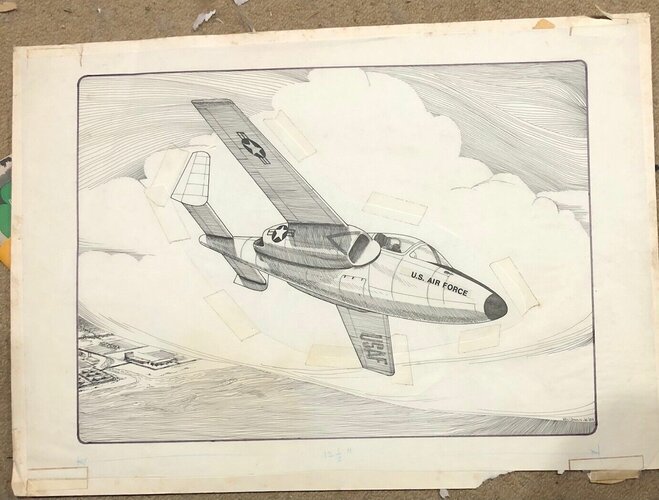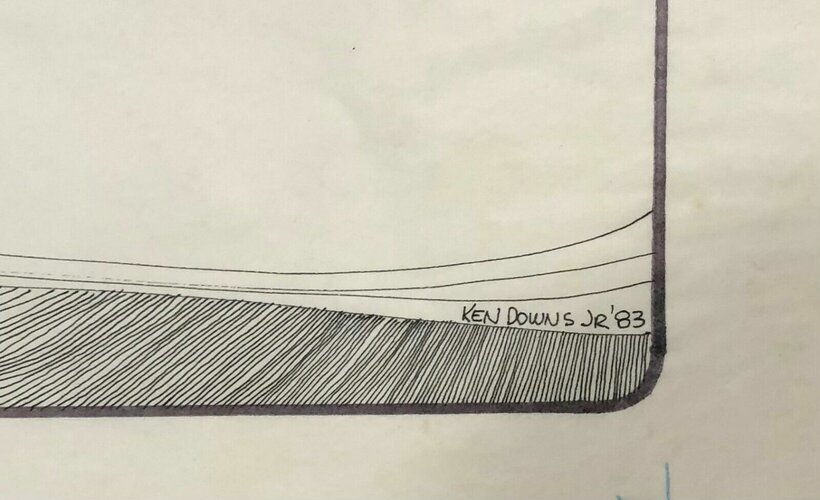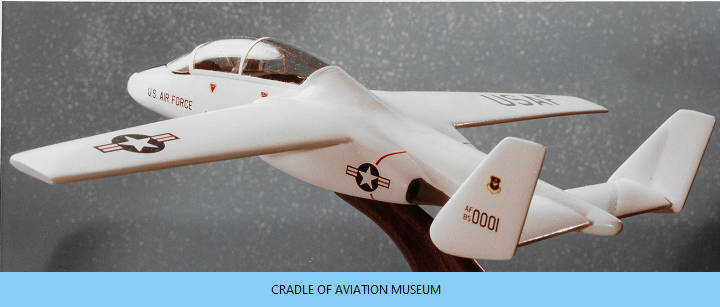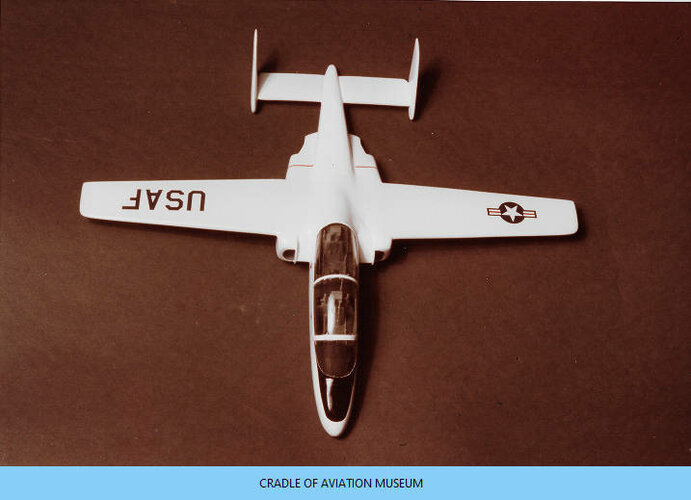You are using an out of date browser. It may not display this or other websites correctly.
You should upgrade or use an alternative browser.
You should upgrade or use an alternative browser.
Fairchild-Republic T-46: the debacle of the NGT winner
- Thread starter Iranian F-14A
- Start date
- Joined
- 3 June 2006
- Messages
- 3,069
- Reaction score
- 3,836
How about that. Add a bunch of 0.303 machine guns underwings, and that unfortunate T-46 could have decimated the whole Luftwaffe, including those peskies Me-262s. ;D He was just born at the wrong time...
- Joined
- 3 June 2006
- Messages
- 3,069
- Reaction score
- 3,836
fightingirish said:Interesting article of the Fairchild T-46 Eaglet in the newest issue of the German magazine "Klassiker der Luftfahrt 05-2011".
Source (in German):
Klassiker der Luftfahrt 05/2011 - Fairchilds letztes Flugzeug - Fairchild T-46
Attachments
-
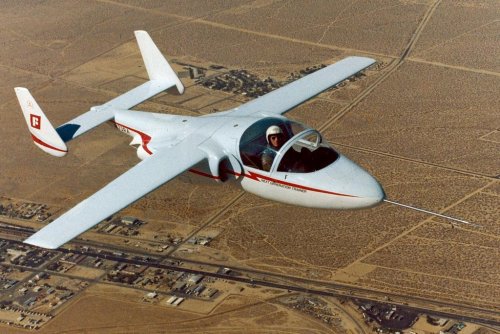 kl 05-2011 USAF Trainingsprogramm 09.jpg143 KB · Views: 234
kl 05-2011 USAF Trainingsprogramm 09.jpg143 KB · Views: 234 -
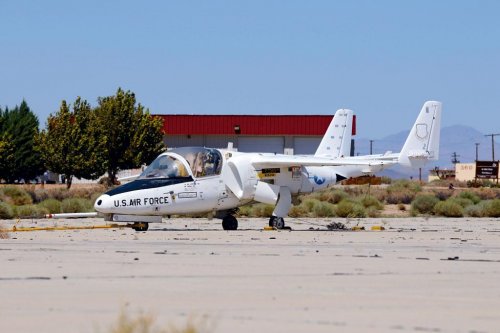 kl 05-2011 USAF Trainingsprogramm 08.jpg75.6 KB · Views: 224
kl 05-2011 USAF Trainingsprogramm 08.jpg75.6 KB · Views: 224 -
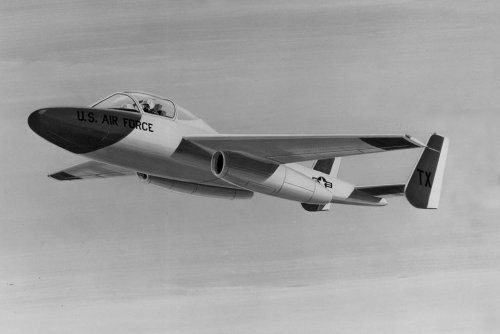 kl 05-2011 USAF Trainingsprogramm 07.jpg41.3 KB · Views: 206
kl 05-2011 USAF Trainingsprogramm 07.jpg41.3 KB · Views: 206 -
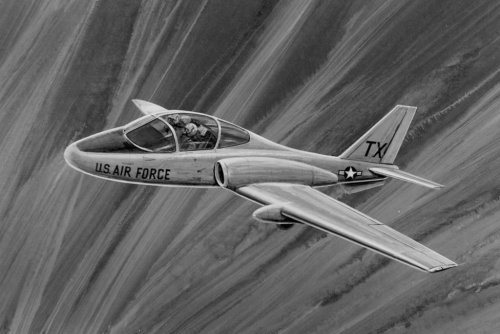 kl 05-2011 USAF Trainingsprogramm 06.jpg80.6 KB · Views: 201
kl 05-2011 USAF Trainingsprogramm 06.jpg80.6 KB · Views: 201 -
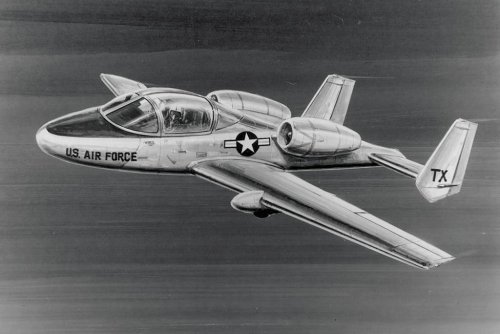 kl 05-2011 USAF Trainingsprogramm 05.jpg74 KB · Views: 231
kl 05-2011 USAF Trainingsprogramm 05.jpg74 KB · Views: 231 -
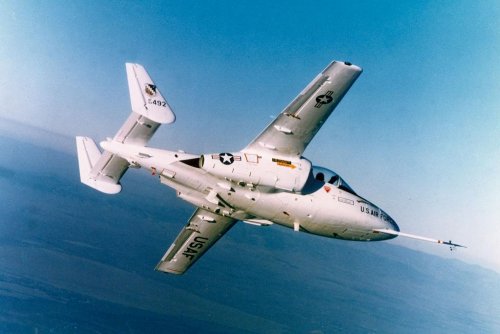 kl 05-2011 USAF Trainingsprogramm 04.jpg76.1 KB · Views: 227
kl 05-2011 USAF Trainingsprogramm 04.jpg76.1 KB · Views: 227 -
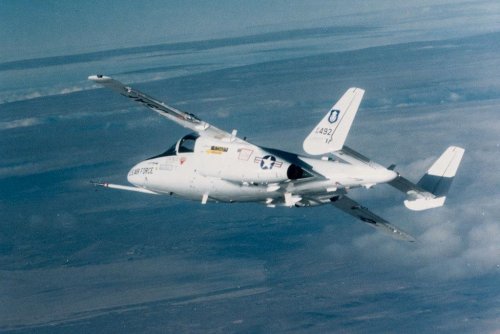 kl 05-2011 USAF Trainingsprogramm 03.jpg85 KB · Views: 203
kl 05-2011 USAF Trainingsprogramm 03.jpg85 KB · Views: 203 -
 kl 05-2011 USAF Trainingsprogramm 02.jpg97.8 KB · Views: 324
kl 05-2011 USAF Trainingsprogramm 02.jpg97.8 KB · Views: 324 -
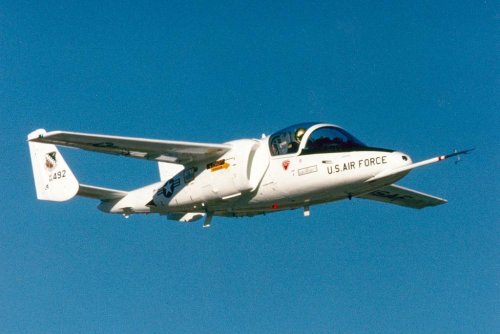 kl 05-2011 USAF Trainingsprogramm 01.jpg88.2 KB · Views: 348
kl 05-2011 USAF Trainingsprogramm 01.jpg88.2 KB · Views: 348
- Joined
- 25 June 2009
- Messages
- 14,605
- Reaction score
- 5,650
Nice set of pics, thanks a lot for scanning and sharing! Just for the record, last picture shows the subscale demonstrator built by Ames Industrial with help from Rutan Aircraft Factory.
I have more about this one on my website here: http://stargazer2006.online.fr/aircraft/pages/ngt.htm
And though not Rutan-related, I also have a page on the T-46: http://stargazer2006.online.fr/derivatives/pages/eaglet.htm
I have more about this one on my website here: http://stargazer2006.online.fr/aircraft/pages/ngt.htm
And though not Rutan-related, I also have a page on the T-46: http://stargazer2006.online.fr/derivatives/pages/eaglet.htm
- Joined
- 29 July 2009
- Messages
- 1,734
- Reaction score
- 2,323
- Joined
- 29 July 2009
- Messages
- 1,734
- Reaction score
- 2,323
- Joined
- 29 July 2009
- Messages
- 1,734
- Reaction score
- 2,323
- Joined
- 17 October 2006
- Messages
- 2,393
- Reaction score
- 1,188
With the understanding of winglets at the time, they could have improved the performance, done nothing or made it worse, but probably not by a significant amount compared with FR's other errors.
- Joined
- 29 July 2009
- Messages
- 1,734
- Reaction score
- 2,323
The T-46A's design was heavily influenced by the SAAB-105. Fairchild and SAAB had entered into a partnership to build the SAAB Fairchild SF340 turboprop commuter aircraft and collaborated on the T-46A. The SAAB 105's lines are readily apparent in the T-46A's layout. The H-tail was probably used over the SAAB's T-tail to increase spin recovery and effective control at high angels-of-attack. The winglets, I'm assuming, was to increase fuel economy at altitude as the Eaglet was supposed to be pressurized and cruise up to 41,000ft.
The T-46A was cited by the USAF as having a number of deficiencies. The largest problem was the amount of drag that it produced. I can imagine that the drag issue came up during wind tunnel tests and as a means to reduce drag and increase performance the winglets could have been considered. Ultimately, after the design was frozen FRC had chosen the Garrett F109 engines with a thrust of 1,330 lb st each. The USAF wanted FRC to use the TFE76 demonstration engine of 1,500 lb st. due to concerns over potential weight increases, but FRC decided a use a smaller engine in development with Garrett.
The GAO highlighted these performance deficits:
1. High drag
2. Lack of adequate stall warning
3. Roll trim issues
4. Speed brake buffet
5. Airframe weight increases
Program mismanagement was also cited as a severe problem in the T-46A program at FRC, with slipped delivery dates and substantial cost overruns.
The T-46A was cited by the USAF as having a number of deficiencies. The largest problem was the amount of drag that it produced. I can imagine that the drag issue came up during wind tunnel tests and as a means to reduce drag and increase performance the winglets could have been considered. Ultimately, after the design was frozen FRC had chosen the Garrett F109 engines with a thrust of 1,330 lb st each. The USAF wanted FRC to use the TFE76 demonstration engine of 1,500 lb st. due to concerns over potential weight increases, but FRC decided a use a smaller engine in development with Garrett.
The GAO highlighted these performance deficits:
1. High drag
2. Lack of adequate stall warning
3. Roll trim issues
4. Speed brake buffet
5. Airframe weight increases
Program mismanagement was also cited as a severe problem in the T-46A program at FRC, with slipped delivery dates and substantial cost overruns.
- Joined
- 8 January 2006
- Messages
- 1,605
- Reaction score
- 744
I believe it was a less-powerful version of the same basic engine rather than a smaller one. Both are turbofan derivatives of TPE331 turboprop. It could be that the F109 was fully certified while the TFE76 was still a demonstration engine and FRC decided to play it safe there.
ScrutorAudax
ACCESS: Confidential
- Joined
- 4 June 2015
- Messages
- 66
- Reaction score
- 97
I found these.
Attachments
-
 Fairchild Republic T-46 Model Image 007.jpg133.6 KB · Views: 128
Fairchild Republic T-46 Model Image 007.jpg133.6 KB · Views: 128 -
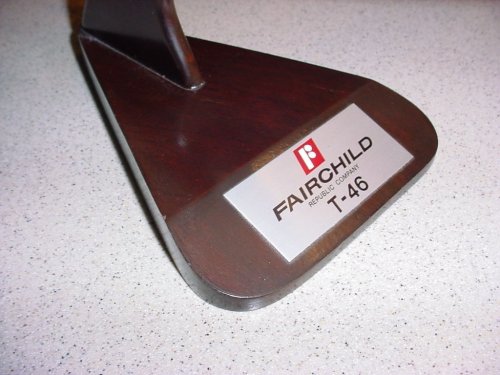 Fairchild Republic T-46 Model Image 006.jpg110.8 KB · Views: 74
Fairchild Republic T-46 Model Image 006.jpg110.8 KB · Views: 74 -
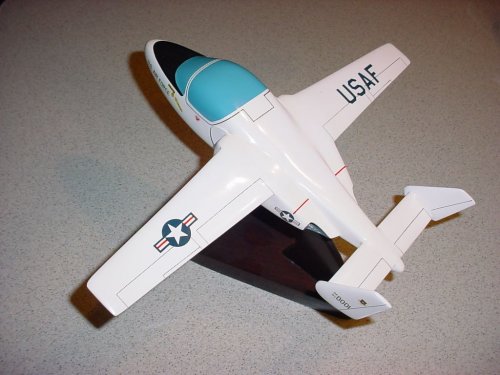 Fairchild Republic T-46 Model Image 005.jpg113.5 KB · Views: 81
Fairchild Republic T-46 Model Image 005.jpg113.5 KB · Views: 81 -
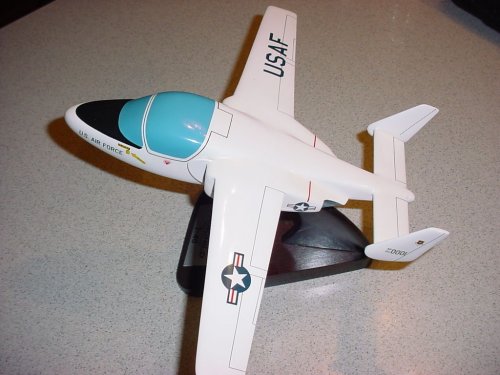 Fairchild Republic T-46 Model Image 004.jpg116.4 KB · Views: 79
Fairchild Republic T-46 Model Image 004.jpg116.4 KB · Views: 79 -
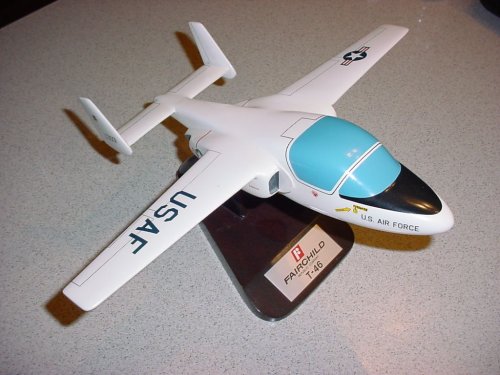 Fairchild Republic T-46 Model Image 003.jpg123.5 KB · Views: 78
Fairchild Republic T-46 Model Image 003.jpg123.5 KB · Views: 78 -
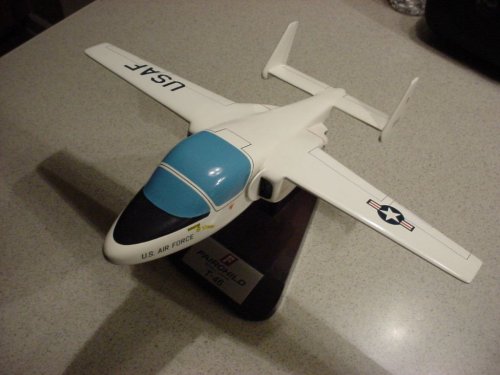 Fairchild Republic T-46 Model Image 002.jpg95 KB · Views: 87
Fairchild Republic T-46 Model Image 002.jpg95 KB · Views: 87 -
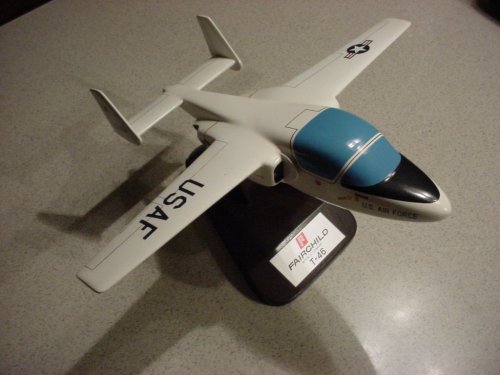 Fairchild Republic T-46 Model Image 001.jpg97.8 KB · Views: 144
Fairchild Republic T-46 Model Image 001.jpg97.8 KB · Views: 144
- Joined
- 29 July 2009
- Messages
- 1,734
- Reaction score
- 2,323
- Joined
- 29 January 2008
- Messages
- 914
- Reaction score
- 2,022
RipSteakface
ACCESS: Restricted
- Joined
- 18 May 2019
- Messages
- 25
- Reaction score
- 32
God i wish the Air Force had bought these. Might still be seeing new planes roll out of Hagerstown if they did.
But Republic screwed up very badly. That's why the plane was rejected and why they went under. They were like freakkin' WWII Curtiss - once great, now dismal.
Of course had Republic not botched the job like they did the plane would have been a fine little trainer.
Of course had Republic not botched the job like they did the plane would have been a fine little trainer.
- Joined
- 31 July 2013
- Messages
- 568
- Reaction score
- 1,168
Whilst looking up anything to do with the T.46 and AST-412 (yes it was in the list) I found this little jewel that you might appreciate.
- Joined
- 6 September 2006
- Messages
- 4,790
- Reaction score
- 9,207
- Joined
- 31 July 2013
- Messages
- 568
- Reaction score
- 1,168
Thanks for this, I hoped that something might come of my request!This was the verdict of the T-46A as tendered to AST.412 in 'An Assessment of the Technical and Cost Implications of Refurbishing or Replacing the Jet Provost Basic Training Fleet', compiled by J. E. Rossiter (FMA1), 15th Feb 1984, TNA AVIA 69/24
View attachment 690384
View attachment 690385
View attachment 690386
I had never heard of this plane before, but it is shocking. How in the hell did Fairchild go from the A-10 to this in less then a decade? Seriously this plane looks so smiler to the swedish saab 105 biult two decades before hand and they managed to completely fail at it? Honestly stunning.
- Joined
- 1 April 2006
- Messages
- 11,299
- Reaction score
- 9,687
- Joined
- 25 June 2009
- Messages
- 14,605
- Reaction score
- 5,650
I may be wrong, but I tend to think that the problem lied more with the way Fairchild mismanaged their Republic division, just the way that Curtiss-Wright mismanaged their aviation division.But Republic screwed up very badly. That's why the plane was rejected and why they went under. They were like freakkin' WWII Curtiss - once great, now dismal.
Of course had Republic not botched the job like they did the plane would have been a fine little trainer.
Silencer1
That now I am the Ruler of the Queen's Navee!
- Joined
- 3 August 2009
- Messages
- 897
- Reaction score
- 580
Not only art of drawings - but art of aircraft design. Perhaps, some of the designs appeared to be far from masterpieces, as it sometimes became in the fine art.When art was an art
This sketch show the exagerrated representeation of T-46, that its' designers were unable to realize into the real aircraft.
P.S. Infamous XFV-12 comes to my mind: very elegant, but very ineffective
- Joined
- 3 June 2006
- Messages
- 3,069
- Reaction score
- 3,836
Attachments
Similar threads
-
TOPICS: American trainer competitions
- Started by Stargazer
- Replies: 1
-
Republic AP-100 VTOL fighter
- Started by overscan (PaulMM)
- Replies: 45
-
Vought V-533, V-538, V-539, V-541 'Eaglet' NGT designs
- Started by Mark Nankivil
- Replies: 44
-
1965 - 1969 FX Competition (F-15 alternatives)
- Started by hesham
- Replies: 109
-
USAF T-36A trainer (Beechcraft Model 46 / Canadair CL-60)
- Started by EEP1A
- Replies: 47

